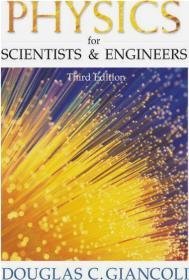
Physics for Scientists Engineers
Autor: ...
Wydawnictwo: Prentice HallISBN: 9780130179753
EAN:
Format: ...
Oprawa: ...
Stron: ...
Data wydania: ...
For the calculus-based General Physics course primarily taken by engineers and science majors (including physics majors).
This long-awaited and extensive revision maintains Giancoli's reputation for creating carefully crafted, highly accurate and precise physics texts. Physics for Scientists and Engineers combines outstanding pedagogy with a clear and direct narrative and applications that draw the student into the physics. The new edition also features an unrivaled suite of media and on-line resources that enhance the understanding of physics.
Strong Problem Solving Guidance
Developing the ability to solve a variety of problems is crucial in the calculus-based physics course. The Third Edition addresses this need in several ways. Here are a few:
- Conceptual Examples-foster development of students' reasoning skills and promote the understanding of the basic underlying concepts.
- Estimating Examples-give students insight into how to quickly make approximations and order-of-magnitude estimates.
- Problem-Solving Boxes-outline a methodology for solving problems.
- End-of-Chapter Problems have been greatly increased-30% more than in the Second Edition; many old problems have been rewritten or revised for clarity. Problems are again ranked by difficulty and arranged by section.
- General Problems account for approximately 30% of all end-of chapter problems-These problems are unranked and not arranged by section number.
Outstanding Pedagogy
Physics is a difficult subject that can be made more accessible through the use of pedagogical tools. The new edition features an abundance of these including:
- Marginal Notes-highlight important or confusing concepts, provide problem solving hints, or point out interesting applications. The Great Laws of Physics are emphasized in margin notes.
- Page Layout-A great effort was made to keep important derivations and arguments on facing pages so students do not have to repeatedly turn back and forth, keeping the important physics directly in front of them.
- Increased emphasis on free-body diagrams.
- Increased use of graphs, especially in kinematics.
- More incorporation of symmetry-With an emphasis on its usefulness in problem-solving.
Stunning New Art Program
In physics, the ability to create sketches and diagrams is a critical problem-solving skill. Many students are also visual learners, and clear, instructive photographs and illustrations are necessary to aid understanding of the physics.
- More diagrams-nearly twice as many diagrams as the previous edition. All graphs and photographs have been carefully redone using full color.
- Many photos are printed with vectors superimposed in a fifth color to point out the relevant physics.
Clear and Direct Narrative
Clarity is crucial for student understanding. The narrative is clear and direct, and numerous topics have been reorganized or rewritten for maximum clarity.
- Many new topics have been incorporated-such as: the Otto cycle, lens combinations, three-phase alternating current, and many more!
- NEW - New developments and discoveries in physics have been added including-the Hubble space telescope, age and inflation of the universe, and distant planets.
- Modern physics topics are often discussed within the framework of classical physics where appropriate-Topics that are woven into classical physics include: superconductivity, nuclear collisions, atomic distances, sizes of stars, and more.
Relevant and Engaging Applications
The calculus-based physics course serves a wide variety of students from different fields. Gi
Książka "Physics for Scientists Engineers"
Copyright © mKsiegarnia.pl - Porównywarka Cen Książek

